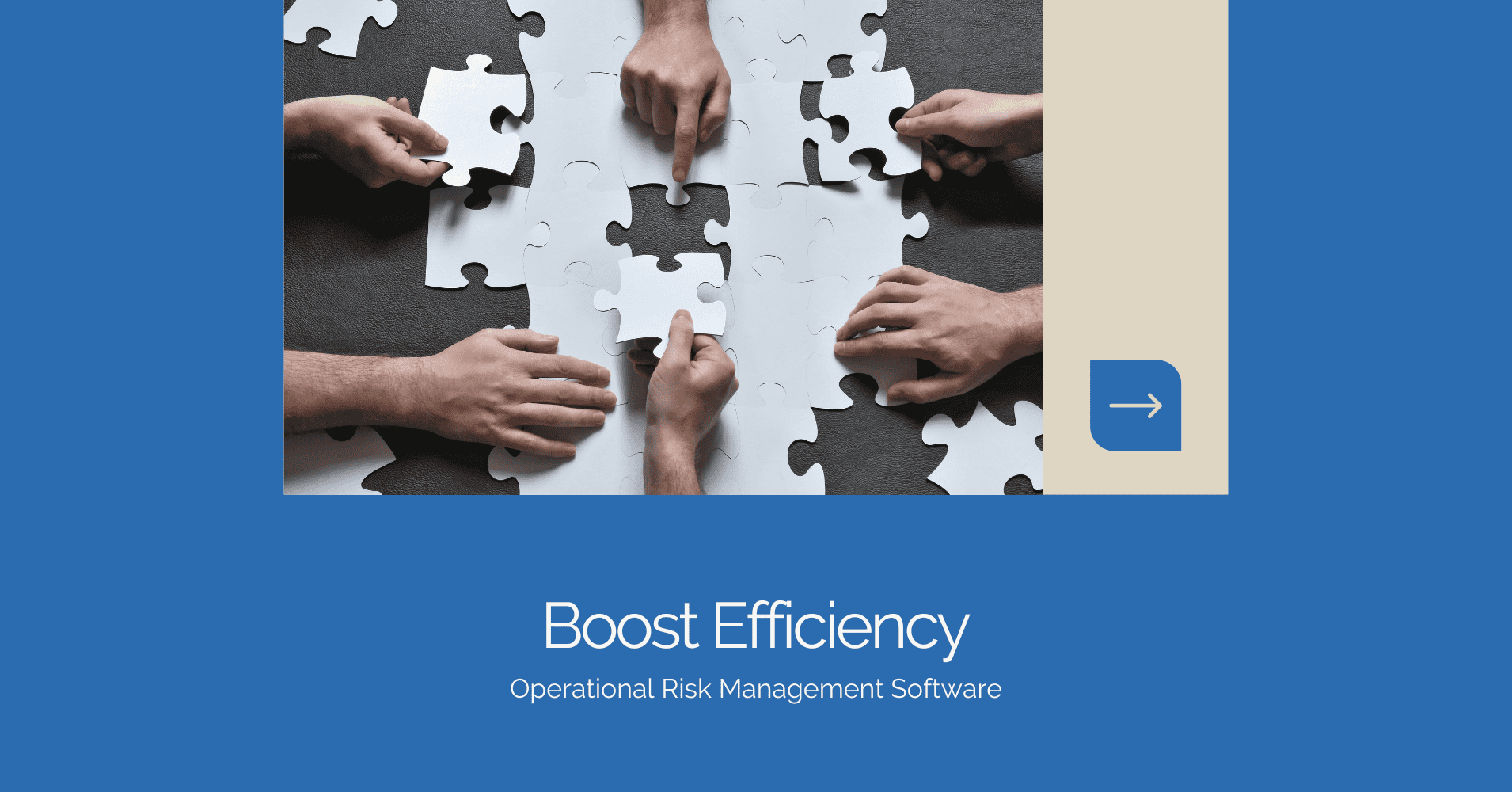Want to take your company to a new level?
If yes, today is your lucky day because we’ll assess software that forever changes your thoughts about how Operational Risk Management (ORM) software transforms risk management.
So, what is operational risk?
Operational risk is all the things that can go wrong in your day-to-day business activities. These include human errors, system breakdowns, and even bigger catastrophes.
What if you had a crystal ball that could show you all the errors that could happen?
That’s what operation risk management software can do for you! It’s your risk-busting superhero—software for ‘managing and monitoring all organisational risks across your entire business and enhancing ‘operational excellence’, whatever that means. Even better, it also reduces your risks of disaster, promoting a culture of ‘risk awareness’ throughout the company.
However, you might wonder how this all works in practice. So, let’s examine risk management in more detail.
The first part is risk identification. This is where the magic starts to happen. Operational Risk Management software scopes out your business’s risks before they happen. It’s like having a risk-management SWAT team working 24/7 to scan your business for any red flags.
Then, risk assessment comes into play. This is where the software shines: it helps analyse each risk’s possible probability and consequence. It helps you decide which you must attend to first. It becomes a fitness trainer for your business, helping you identify your weak areas.
However, identifying and evaluating risks is only the first step. Operational Risk Management software also helps you with risk control and mitigation. This is to say, it consolidates your playbook of risk management activities to help you prepare plans to manage the likelihood and possible impact of different risks.
The risk register is another of the most valuable features of many risk management software tools. It is a super-powered to-do list for risk. It’s a record of all the risks you’ve identified, their potential impact, and everything you’re doing to manage them. It’s a single point of truth for all your risk data and ensures everyone in your organisation is on the same page.

And now come the questions that matter: ‘How does this tie into my overall business strategy?’ This is a great question, but let’s answer it later. Operational risk management is part of Enterprise Risk Management (ERM). Operational risk is about your business on a day-to-day basis, but ERM is about your business as a whole. ERM will encompass all risks significant to your organisation, including strategic risks and opportunities.
One of the most compelling value-adds for using ORM software is that it provides you with a sea of risk data, not just any old data, but rich data that you can mine for actionable insights that guide your decision-making. Suppose you look at risk trends and key risk indicators. In that case, you can spot patterns and make better-informed choices about your risk management strategy.
However, the ability to anticipate and manage risks isn’t the only benefit of having a clear view of your risk landscape. When you know what you’re up against, you can afford to take more significant risks because you know you’re well prepared to deal with the challenges that may arise.
Now, for a moment, let’s talk a little about compliance. In a regulatory environment like today’s, staying compliant can feel like a full-time job. You’ll be glad to know that many operational risk management software solutions offer compliance management functions. They can track regulatory requirements, monitor audits and keep you on the right side of the law.
Let’s mention the internal audit teams. These often unsung heroes in the risk management world are vital to most ORM systems’ work. Many have components expressly designed to support their role, helping them plan, track findings and recommendations, etc.
What about third-party risks? Don’t worry, covered there, too. Most ORM software solutions include functionality for Third-party risk management. This helps you track the risks in your supply chain with vendors, partners and other external entities.
However, the advantages of implementing operational risk management software, whether you select the most expensive package or the lowest cost solution, are equally clear: it can help you:
- Improve your overall risk awareness
- Streamline your risk management process
- Enhance your decision-making with risk intelligence
- Boost your operational resilience
- Ensure regulatory compliance
- Support your internal audit function
- Manage third-party risks more effectively
Sure, bringing in any new software will have its issues. Questions around integration with the rest of your systems include staff training and change management. But if you can get past those initial hurdles, the long-term benefits will be well worth it.
ORM software is just a tool. It won’t magically solve your problems. You still need sound risk management and a strong risk culture to make it work.
Considering the human factor in culture, let’s discuss your organisation’s risk appetite—the amount of risk it wants to take to achieve its goals. Operational risk management software can help you define and communicate your risk appetite throughout your organisation and ensure everyone understands your risk tolerance.
You might say, ‘This sounds great, but what about the bottom line?’ Effective ORM can enhance your financial performance by helping you avoid costly incidents and increase efficiency.
However, it’s not just about loss avoidance but also value creation. When all of an organisation’s risks are surfaced, and the operational risk management software output is a system-wide view of the risk landscape, it becomes easier to explore new opportunities for growth and innovation.
Remember that information security is one of the main concerns of the modern age. Most operational risk management software packages contain modules to address information security risks and protect sensitive data.
ORM software, for example, is another area where you can take advantage of the ‘one-plus-one-equals-three’ approach and create value. It helps you identify and manage risk for your products throughout their lifecycle while creating safer, more sustainable products that meet your customers’ needs.
Work in an industry where safety is essential. Many operational risk management software solutions will also include process safety management features to ensure your operations run efficiently and safely for your employees and the environment.
Still, even the best risk management software will be useless without the right people to make it work. Always remember that the people behind the scenes make a difference. That’s why you should train your team adequately and, most importantly, cultivate a culture of risk awareness in your organisation.
Final Thoughts

And so, there you have it – a fly-by of the world of ORM software.
Identify and assess your risks, control and mitigate them, manage your compliance, excel at operations, and launch your business into the skies!
Remember, it’s not about removing risk; it’s about managing risk. The right software (whether very complex or helpful and easy to use, like GetRiskManager) and risk management strategy can transform threats into opportunities for business success.
And so, what are you waiting for? Look into ORM software today. Your future self (and bottom line) will thank you for it.






